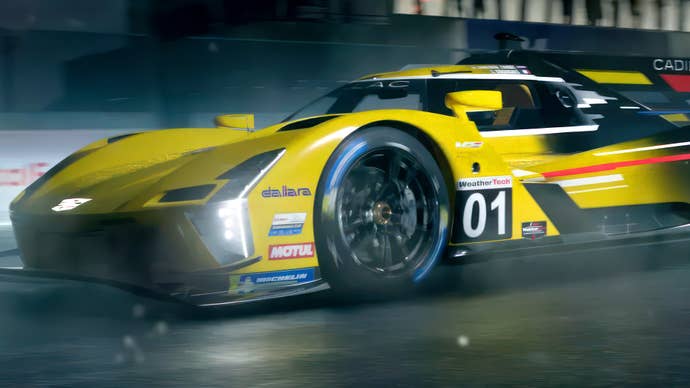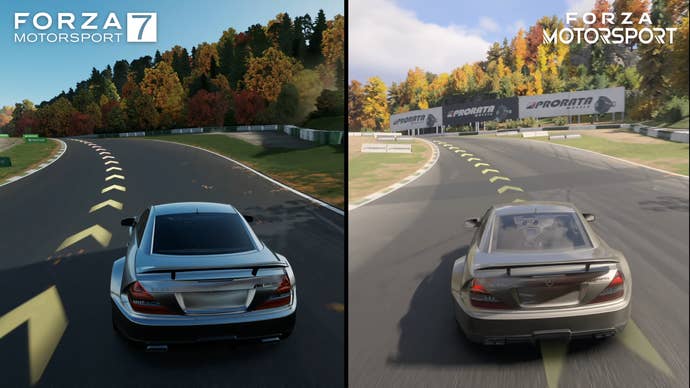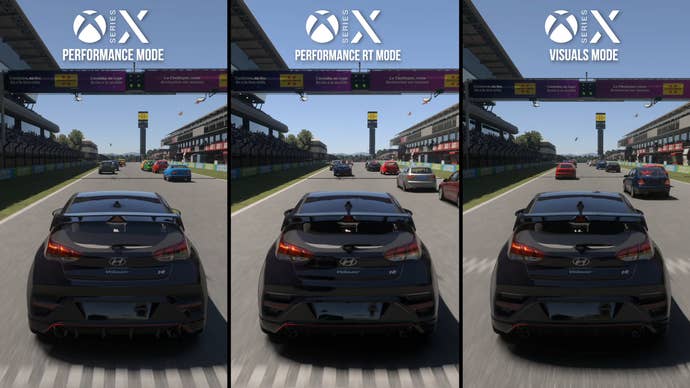But ray-traced reflections fall short of expectations - and Microsoft’s own marketing.
How have the graphics been enhanced since the last series entry?
And have we seen any notable improvements over the preview code?

Right from the opening, it’s clear that Forza Motorsport is an impressive-looking racing game.
There are intricate car models, detailed and well-lit tracks, with ray-traced reflections.
Perhaps the best place to start is by drawing some close comparisons with Forza Motorsport 7.

Let’s start with the most iconic track in Forza Motorsport history: Maple Valley.
The game’s lighting in general also gets a big boost.
Forza Motorsport 7 tends to have a flat appearance which looked unnatural in shaded areas.

Its sequel typically has a richer lighting presentation, which is especially noticeable in complex areas like trackside stands.
Each track is remodelled.
Forza Motorsport also pulls ahead in car rendering.

The actual car geometry for returning cars is often quite similar to Forza Motorsport 7.
There are some definite tweaks and enhancements though, like the wheels, which have been remodeled.
The big change comes down to car materials, which are overhauled for this new entry.

Car paint also looks more correct to my eyes.
I’m sure the RTAO plays a role here, as well as the improved reflections.
It mostly works, especially when racing at high speed, but there are some notable flaws too.

The real-time cubemaps update at just 30fps, for one thing.
This is where some understandable consternation online has erupted.
Forza Motorsport is a very good-looking racing game overall.

On Series X there are three visual modes: performance, performance RT and quality.
General visual prefs are quite similar for all three modes, with the exception of ray tracing.
The performance mode completely lacks RT, so you don’t see any reflections of other cars while racing.

Ray-traced ambient occlusion is also absent from the performance mode.
In areas with complex geometry, the RTAO simply makes a huge difference.
And across the Performance RT and visuals modes, the RTAO presentation looks substantially the same.

This is very rarely noticeable while racing, however.
On top of those options tweaks, predictably there is a resolution difference between the three modes.
The overall image in Forza Motorsport is much more stable.

It does exhibit some issues at times, but the switch to TAA has definitely paid off here.
Series S packs two modes, called performance and visuals.
Both lack all forms of RT during gameplay and replays, basically resembling the performance mode on Series X.

This has a pretty big impact on the graphics unfortunately.
The performance mode is particularly soft and doesn’t fare well against the relatively sharp output on Series X. Thankfully, both Series consoles manage a basically impeccable output in frame-rate terms.
This is impressive stuff.
As a final note, I did encounter some glitches with Forza Motorsport while playing.
Forza Motorsport is a very good-looking game - and it plays well too.